Guide to Growing Beets in Your Backyard
Growing beets in your backyard is not just a rewarding endeavor; it’s a journey filled with vibrant colors, earthy flavors, and the satisfaction of nurturing your own food. This article provides comprehensive insights into growing beets, covering everything from soil preparation to harvesting, ensuring a successful beet crop in your backyard garden. Whether you're a seasoned gardener or a newbie with a green thumb, this guide will equip you with the knowledge you need to cultivate these delicious root vegetables.
Selecting the appropriate beet varieties is crucial for a successful harvest. Beets come in various types, each with its own unique flavor profile and growth characteristics. Some popular varieties include:
- Detroit Dark Red: This classic variety is known for its sweet flavor and vibrant color, making it a favorite among home gardeners.
- Chioggia: Often referred to as the candy stripe beet, Chioggia features stunning concentric rings of red and white, adding visual appeal to any dish.
- Golden Beet: With its bright yellow flesh, this variety offers a milder taste and is perfect for salads and roasting.
When choosing your beets, consider your climate and personal taste preferences. Some varieties thrive better in cooler temperatures, while others are more heat-tolerant. Researching local growing conditions can help you make the best choice.
Proper soil preparation is vital for healthy beet growth. Beets prefer well-draining, loamy soil rich in organic matter. The ideal soil should have a pH level between 6.0 and 7.0, allowing for optimal nutrient absorption. To create the ideal growing environment for your beets, you need to focus on a few key aspects:
Understanding soil pH is essential for optimal beet growth. You can easily test your soil's pH using a home testing kit or by sending a sample to a local extension service. The ideal pH range for growing beets effectively is between 6.0 and 7.0. If your soil falls outside this range, don’t worry; there are ways to adjust it.
If your soil's pH is not ideal, you can adjust it using simple methods. For instance, adding lime can raise the pH of acidic soil, while sulfur can lower the pH of alkaline soil. It's important to follow the recommended guidelines based on your soil test results to ensure a balanced growing environment for your beets.
Incorporating organic matter into your soil can enhance fertility and improve its structure. Compost, well-rotted manure, or leaf mold can enrich your soil, providing essential nutrients and improving water retention. Aim to mix in a generous amount of organic material before planting to give your beets the best start possible.
Beets require specific nutrients for optimal growth, including nitrogen, phosphorus, and potassium. These nutrients can be provided through various fertilizers and soil amendments. A balanced fertilizer with a ratio of 5-10-10 is often recommended, as it promotes strong root development and vibrant foliage. Additionally, consider using organic options like bone meal or fish emulsion to nurture your beets naturally.
Timing and technique are key when planting beets. Beets thrive in cool weather, so the best time to sow seeds is in early spring or late summer. When planting, consider the following practices:
- **Seed Depth:** Plant seeds about 1 to 2 inches deep to ensure proper germination.
- **Spacing:** Space seeds 2 to 4 inches apart in rows that are 12 to 18 inches apart to allow for ample growth.
By following these guidelines, you can set the stage for a bountiful harvest.
Deciding between direct seeding and transplanting can impact your beet crop. Direct seeding involves sowing seeds directly into the ground, which is generally easier and less labor-intensive. However, transplanting can give you a head start by allowing you to start seeds indoors and move them outside when conditions are favorable. Weigh the pros and cons of each method based on your gardening style and the local climate.
Proper watering is crucial for beet development. Beets need consistent moisture, especially during germination and early growth stages. A good rule of thumb is to provide about 1 inch of water per week, either through rainfall or irrigation. Drip irrigation systems can be particularly effective, as they deliver water directly to the roots while minimizing evaporation. Remember, overwatering can lead to rot, so always check the soil moisture before watering.
1. How long does it take for beets to grow?
Beets typically take about 50 to 70 days from planting to harvest, depending on the variety and growing conditions.
2. Can beets be grown in containers?
Yes! Beets can thrive in containers as long as they have enough depth (at least 12 inches) and proper drainage.
3. What pests should I watch out for?
Common pests include aphids and leaf miners. Regularly inspecting your plants and using organic pest control methods can help keep them at bay.
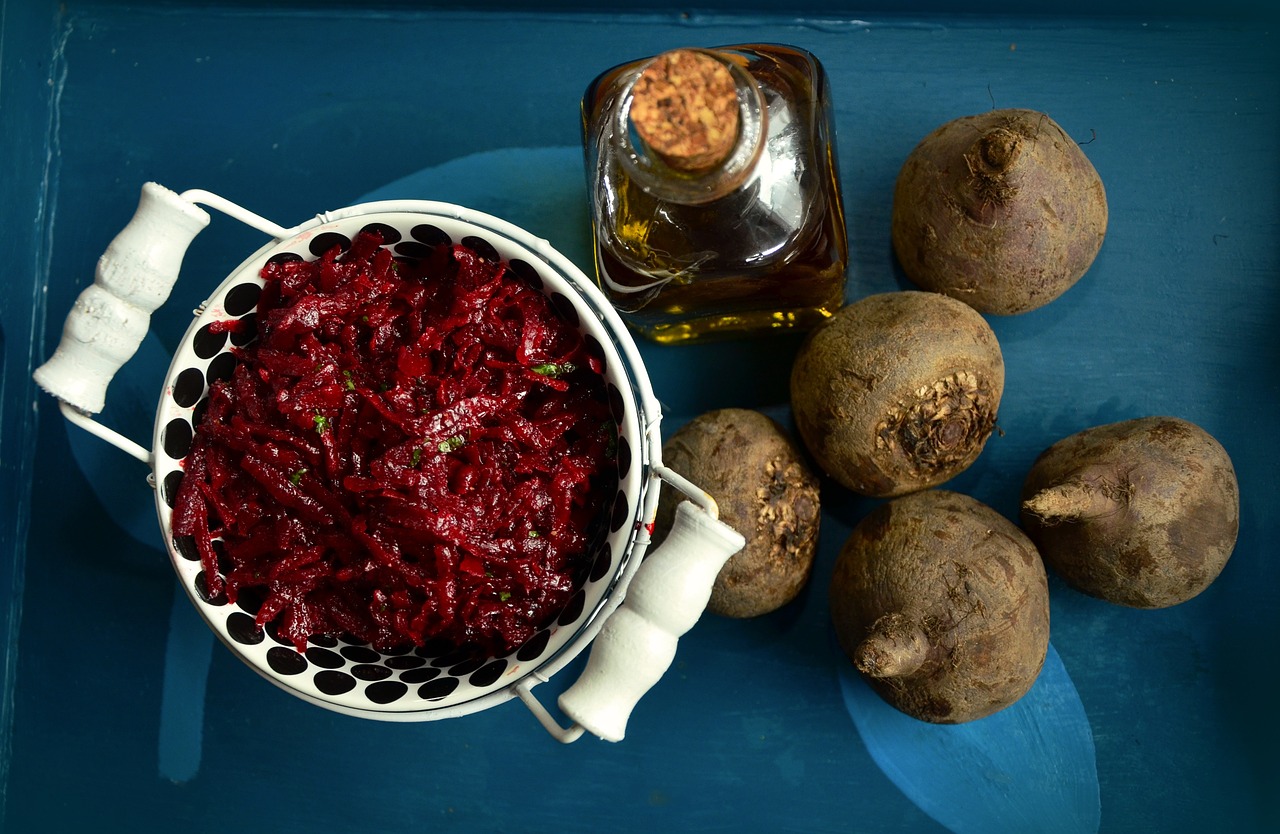
Choosing the Right Beet Varieties
When it comes to growing beets, choosing the right variety is absolutely crucial for a successful harvest. With a variety of beet types available, understanding their unique characteristics can help you select the best options for your garden. Popular beet varieties include Detroit Dark Red, known for its sweet flavor and vibrant color, and Golden Beet, which offers a milder taste and stunning yellow hue. Each variety brings something different to the table, quite literally!
Climate plays a significant role in your selection process. For instance, if you live in a cooler region, you might want to opt for varieties like Chioggia, which can tolerate lower temperatures and still produce delicious roots. On the other hand, warmer climates can benefit from varieties like Early Wonder, which matures quickly and can be harvested earlier in the season. Understanding your local climate is like having a cheat sheet for your gardening success!
In addition to climate, consider your own taste preferences. Do you prefer the classic earthy flavor of traditional red beets, or are you intrigued by the sweeter, milder taste of golden or striped varieties? A great way to figure this out is by experimenting with a few different types in your garden. You could even create a little “beet tasting” event with friends and family to see which variety reigns supreme!
Here’s a quick comparison of popular beet varieties to help you decide:
| Variety | Color | Flavor Profile | Best Climate |
|---|---|---|---|
| Detroit Dark Red | Red | Sweet and earthy | Cool to moderate |
| Golden Beet | Yellow | Milder and sweeter | Moderate |
| Chioggia | Striped Red and White | Sweet and earthy | Cool |
| Early Wonder | Red | Sweet and tender | Warm |
Ultimately, the best beet variety for your backyard garden depends on your climate, taste preferences, and the growing conditions you can provide. So, take a little time to research, and you’ll be well on your way to growing a delicious crop of beets that will impress your taste buds and your dinner guests!
Q: How do I know which beet variety is best for my garden?
A: Consider your local climate and your taste preferences. Research which varieties thrive in your area and try a few different types to see which you enjoy the most.
Q: Can I grow beets in containers?
A: Yes! Beets can be successfully grown in containers as long as they have enough depth and space for their roots to develop.
Q: How long does it take for beets to mature?
A: Generally, beets take about 50 to 70 days to reach maturity, depending on the variety and growing conditions.
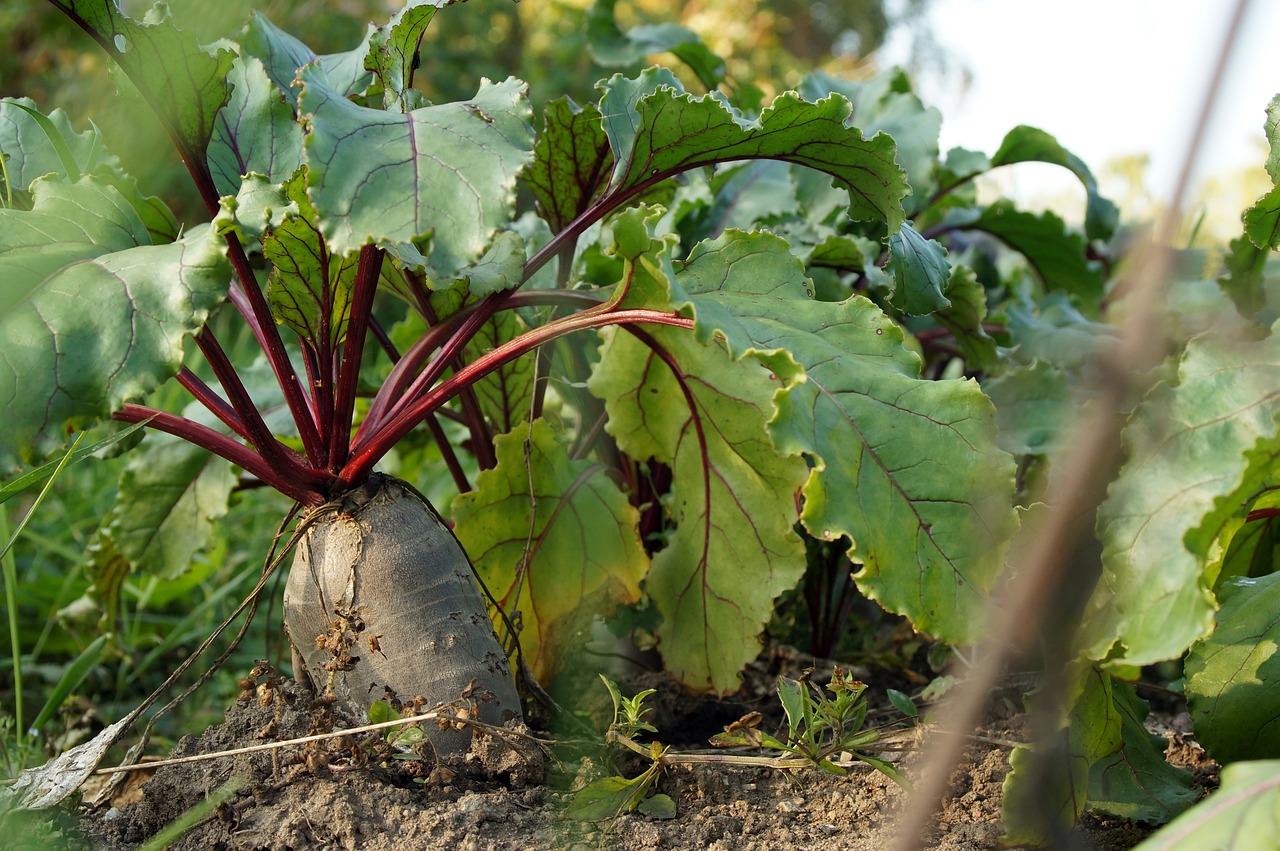
Soil Preparation for Beets
Preparing the soil for your beets is like setting the stage for a grand performance; the better the foundation, the more spectacular the show! Healthy beets thrive in well-aerated, nutrient-rich soil that encourages their sweet, earthy flavors to develop. So, what should you consider when preparing your soil? First and foremost, you need to understand the type of soil you have. Beets prefer loamy or sandy soil that drains well but retains enough moisture to keep the roots hydrated. Heavy clay soil can lead to waterlogging, which is the nemesis of your beet crop!
Next, let’s talk about soil pH. Beets flourish in a slightly acidic to neutral pH range of about 6.0 to 7.0. Testing your soil's pH is a crucial step, and it can be done easily with a home testing kit or by sending a sample to a local agricultural extension office. Once you know your soil's pH, you can make necessary adjustments to create the perfect environment for your beets. If your soil is too acidic, adding lime can help raise the pH; conversely, if it’s too alkaline, sulfur can lower it.
Understanding your soil's pH is essential for optimal beet growth. To test your soil's pH, you can use a simple home testing kit available at garden centers. Just follow the instructions provided, and soon you’ll have a clear picture of your soil’s acidity. Alternatively, you can collect a sample of your soil and send it to a local agricultural extension office for a more comprehensive analysis. This service often includes recommendations for amendments based on your soil's specific needs.
If your soil's pH is not within the ideal range, don't fret! Adjusting it is quite manageable. For soil that is too acidic, you can add lime, which not only raises pH but also adds calcium, an essential nutrient for plant growth. On the other hand, if your soil is too alkaline, incorporating sulfur can help lower the pH. It's important to make these adjustments well in advance of planting, ideally a few weeks beforehand, to give the amendments time to take effect.
Incorporating organic matter into your soil is like giving your beets a nutrient-packed meal. Organic matter, such as compost or well-rotted manure, improves soil structure, enhances moisture retention, and boosts nutrient availability. When you enrich your soil with organic matter, you create a thriving ecosystem that supports healthy beet growth. Aim to mix in about 2 to 4 inches of organic material into the top 12 inches of soil before planting. This not only improves fertility but also encourages beneficial microorganisms that help your plants thrive.
Beets are not particularly demanding, but they do require specific nutrients for optimal growth. Key nutrients include nitrogen, phosphorus, and potassium, along with trace elements like magnesium and iron. A balanced fertilizer can provide these nutrients, but it's always a good idea to base your fertilization strategy on soil test results. This way, you can ensure that your beets receive exactly what they need without over-fertilizing, which can lead to excessive foliage growth at the expense of root development.
In conclusion, the secret to a successful beet harvest lies in meticulous soil preparation. By testing and adjusting your soil's pH, enriching it with organic matter, and ensuring it has the right nutrients, you’ll be well on your way to growing a bountiful crop of delicious beets that will make your garden the talk of the town!
- What type of soil is best for beets? Beets prefer loamy or sandy soil that is well-drained and rich in organic matter.
- How can I test my soil's pH? You can use a home testing kit or send a soil sample to a local agricultural extension office.
- What should I do if my soil's pH is too low? Add lime to raise the pH and improve the growing conditions for your beets.
- How often should I add organic matter? Incorporating organic matter annually or biennially can greatly benefit your soil health.
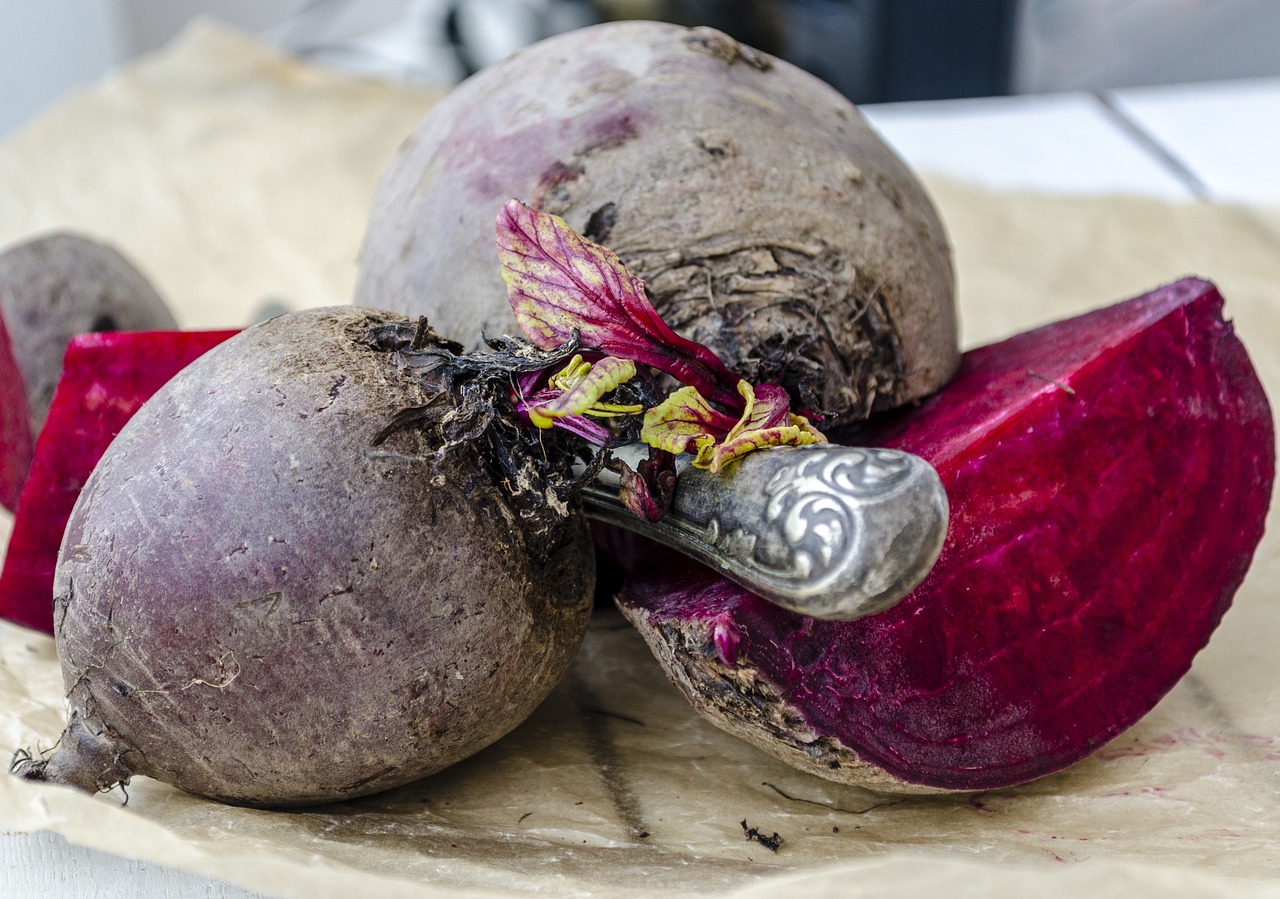
Testing Soil pH
Understanding the soil pH is essential for optimal beet growth. The pH level of your soil can significantly impact the availability of nutrients that your beets need to thrive. Ideally, beets prefer a soil pH range between 6.0 and 7.0. When the pH is too low (acidic) or too high (alkaline), it can lead to nutrient deficiencies, stunted growth, and even poor yields. So, how do you determine your soil's pH? It's simpler than you might think!
To test your soil's pH, you can either use a home testing kit or send a sample to a local extension service for analysis. Home testing kits are readily available at garden centers and are user-friendly. Here’s a quick guide on how to conduct a home soil pH test:
- Gather your materials: You'll need a soil sample, distilled water, and the pH test kit.
- Collect the soil sample: Dig down about 4-6 inches in multiple spots of your garden to get a representative sample.
- Mix and prepare: Combine the samples in a clean container and break up any clumps.
- Follow the kit instructions: Most kits will require you to mix soil with distilled water and then use the provided pH indicator.
Once you have your results, you can determine if your soil is within the ideal range for growing beets. If your pH is outside the desired range, don't worry! There are ways to adjust it, which we'll discuss in the next section.
Remember, testing your soil pH is not a one-time task. It's a good practice to check it every few years, especially if you're planning to grow beets or other nutrient-sensitive crops. By understanding your soil's pH, you're taking the first step toward creating a thriving garden that produces delicious, nutrient-rich beets!
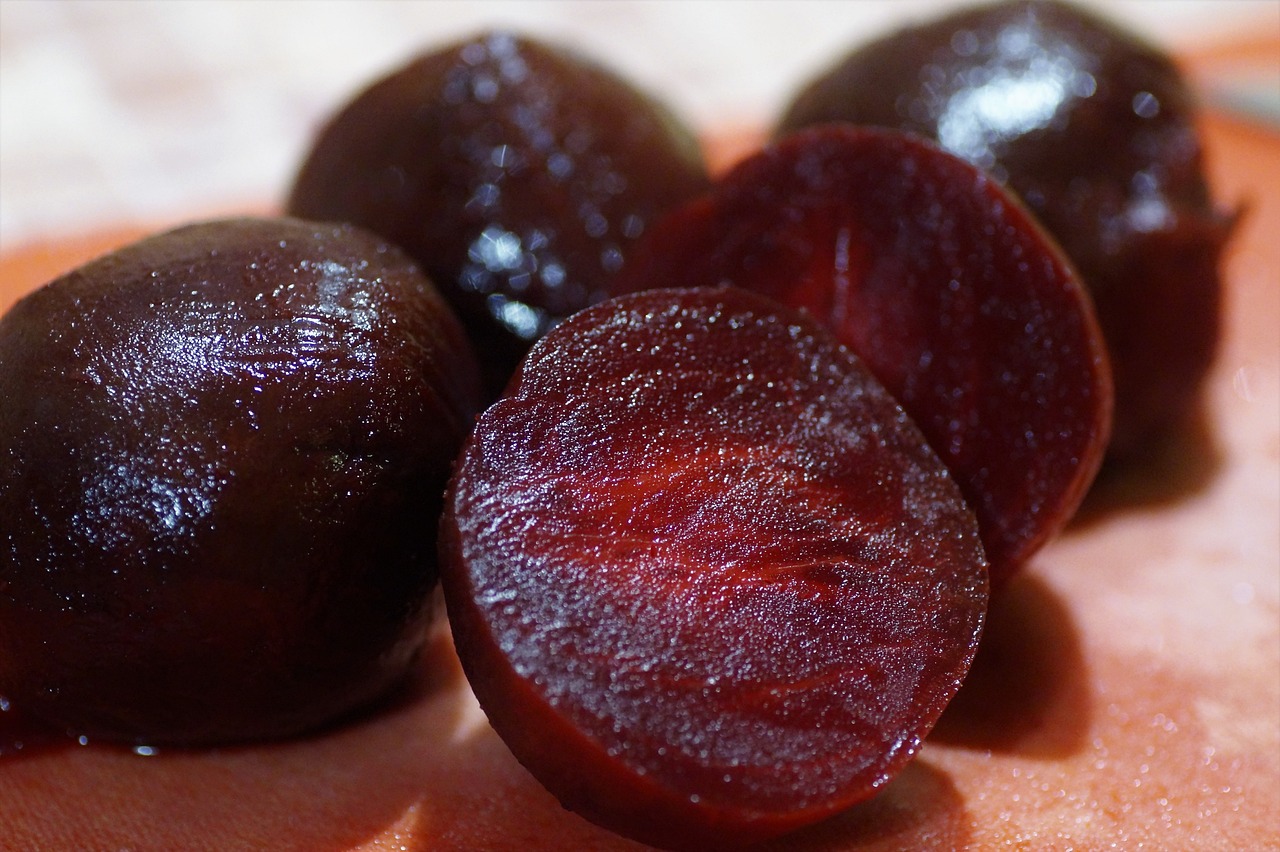
Adjusting Soil pH
When it comes to growing beets, achieving the right soil pH is like finding the perfect recipe for a delicious dish; it sets the foundation for success. If your soil's pH is too high (alkaline) or too low (acidic), your beets may struggle to absorb essential nutrients, leading to poor growth and disappointing yields. So, how do you adjust the pH to create that ideal environment for your beets? Let’s dive into some effective methods.
First, you’ll want to test your soil pH using a simple soil test kit that you can find at garden centers or online. These kits often come with straightforward instructions, making it easy for even novice gardeners to get accurate readings. Ideally, beets thrive in a pH range of 6.0 to 7.0. If your test results show that your soil is outside this range, don’t fret! There are several methods to adjust it.
If your soil is too acidic (below 6.0), you can raise the pH by adding lime. Lime is a natural soil amendment that not only increases pH but also adds calcium, which is beneficial for your beets. The amount of lime you need will depend on how acidic your soil is. A general rule of thumb is to apply about 2 to 5 tons per acre of lime, but always follow the guidance based on your soil test results.
On the flip side, if your soil is too alkaline (above 7.0), you can lower the pH by incorporating sulfur or aluminum sulfate. These amendments work by releasing hydrogen ions into the soil, which helps to acidify it. Again, the quantity will depend on your specific soil conditions, so refer to your soil test for precise recommendations. Typically, you might use about 1 to 2 pounds per 100 square feet of garden space.
In addition to lime and sulfur, incorporating organic matter can also aid in adjusting soil pH. Organic materials like compost or well-rotted manure can help buffer pH fluctuations and improve overall soil health. They not only provide nutrients but also enhance soil structure, making it easier for beets to establish strong roots. Think of organic matter as a cozy blanket that nurtures your beets as they grow.
Remember, adjusting soil pH is not a one-time task. It’s an ongoing process that requires regular monitoring and adjustments as needed. By keeping an eye on your soil’s pH and making the necessary changes, you’ll create a thriving environment that supports robust beet growth. So roll up your sleeves, get your hands dirty, and enjoy the rewarding journey of growing beets in your backyard!
- What is the ideal pH for growing beets? The ideal pH range for growing beets is between 6.0 to 7.0.
- How often should I test my soil pH? It's recommended to test your soil pH at least once a year, or before planting your beets.
- Can I use organic amendments to adjust pH? Yes, organic amendments like compost can help buffer pH levels and improve soil health.
- How long does it take for lime or sulfur to affect soil pH? It can take several weeks to months for lime or sulfur to significantly change soil pH, so plan accordingly.
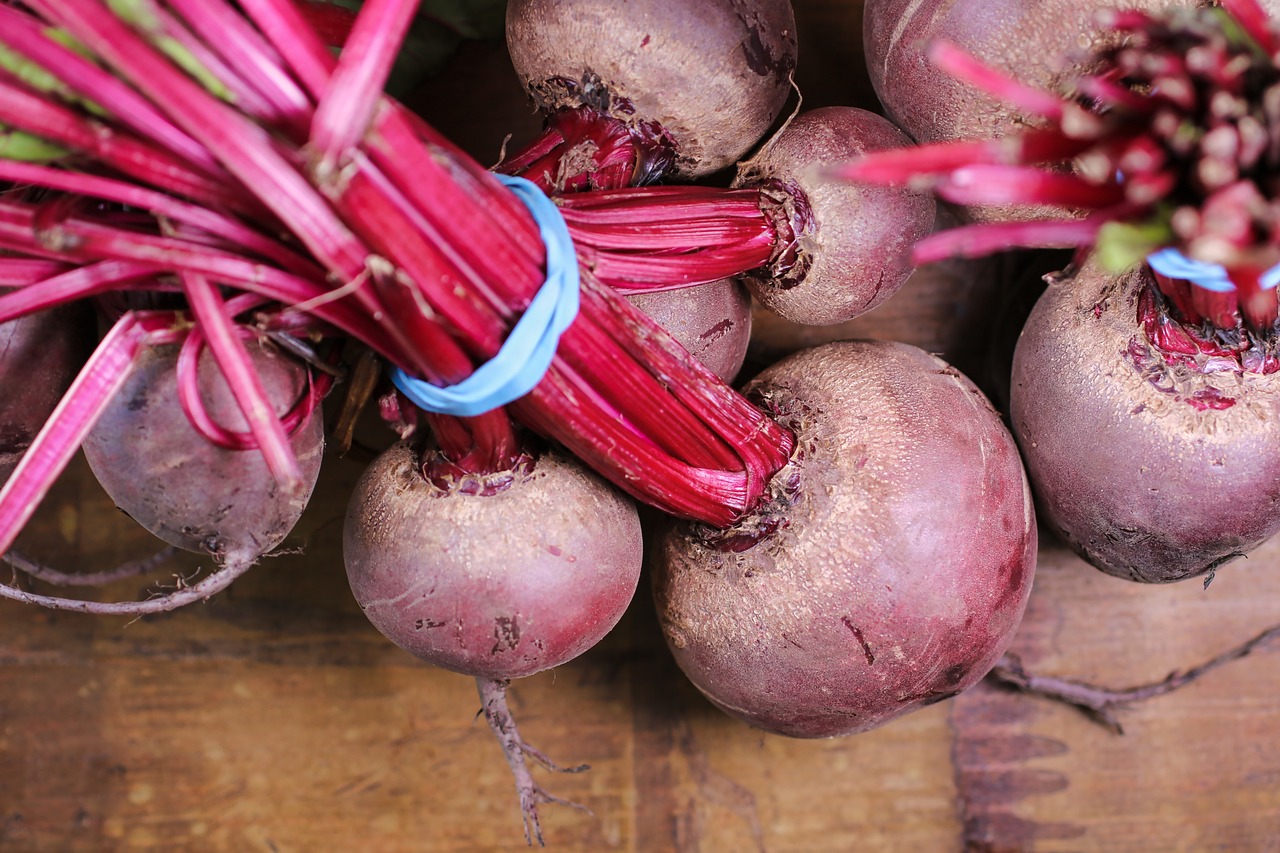
Adding Organic Matter
When it comes to growing beets, one of the most effective ways to enhance soil fertility is by . Think of organic matter as the magic ingredient that transforms your garden into a nutrient-rich paradise. It’s like giving your soil a hearty meal, packed with everything it needs to support healthy beet growth. Organic matter improves soil structure, increases moisture retention, and provides essential nutrients that beets crave.
So, what exactly constitutes organic matter? Well, it can be anything from compost and well-rotted manure to leaf mold and green manure. Each type has its unique benefits, and incorporating a variety can yield the best results. For instance, compost not only enriches the soil but also encourages beneficial microorganisms that help break down nutrients, making them more available to your plants. On the other hand, well-rotted manure is rich in nitrogen, which is crucial for leafy growth, while leaf mold improves soil texture and drainage.
To effectively add organic matter to your soil, follow these simple steps:
- Choose Your Organic Material: Select a mix of compost, manure, and other organic materials based on what you have available and what your soil needs.
- Prepare the Soil: Before adding organic matter, loosen the top layer of soil to allow for better integration.
- Mix It In: Spread a generous layer of organic matter—typically about 2 to 4 inches—over the soil and mix it in well.
- Allow It to Settle: Give your soil a few weeks to settle before planting your beets. This allows the organic matter to start breaking down and enriching the soil.
Incorporating organic matter is not just a one-time task; it’s a continuous process that will pay dividends year after year. Regularly adding organic matter will gradually improve soil health, leading to larger, tastier beets. Think of it as a long-term investment in your garden’s future. Remember, healthy soil equals healthy plants!
Q: How often should I add organic matter to my beet garden?
A: Ideally, you should add organic matter at least once a year, preferably in the spring or fall, to continuously improve soil fertility.
Q: Can I use fresh manure as organic matter?
A: It's best to use well-rotted manure, as fresh manure can contain pathogens that may harm your plants. Always allow it to compost for a few months before application.
Q: What type of compost is best for beets?
A: A balanced compost made from kitchen scraps, yard waste, and other organic materials is ideal. Avoid using compost that contains a lot of wood chips, as they can tie up nitrogen in the soil.
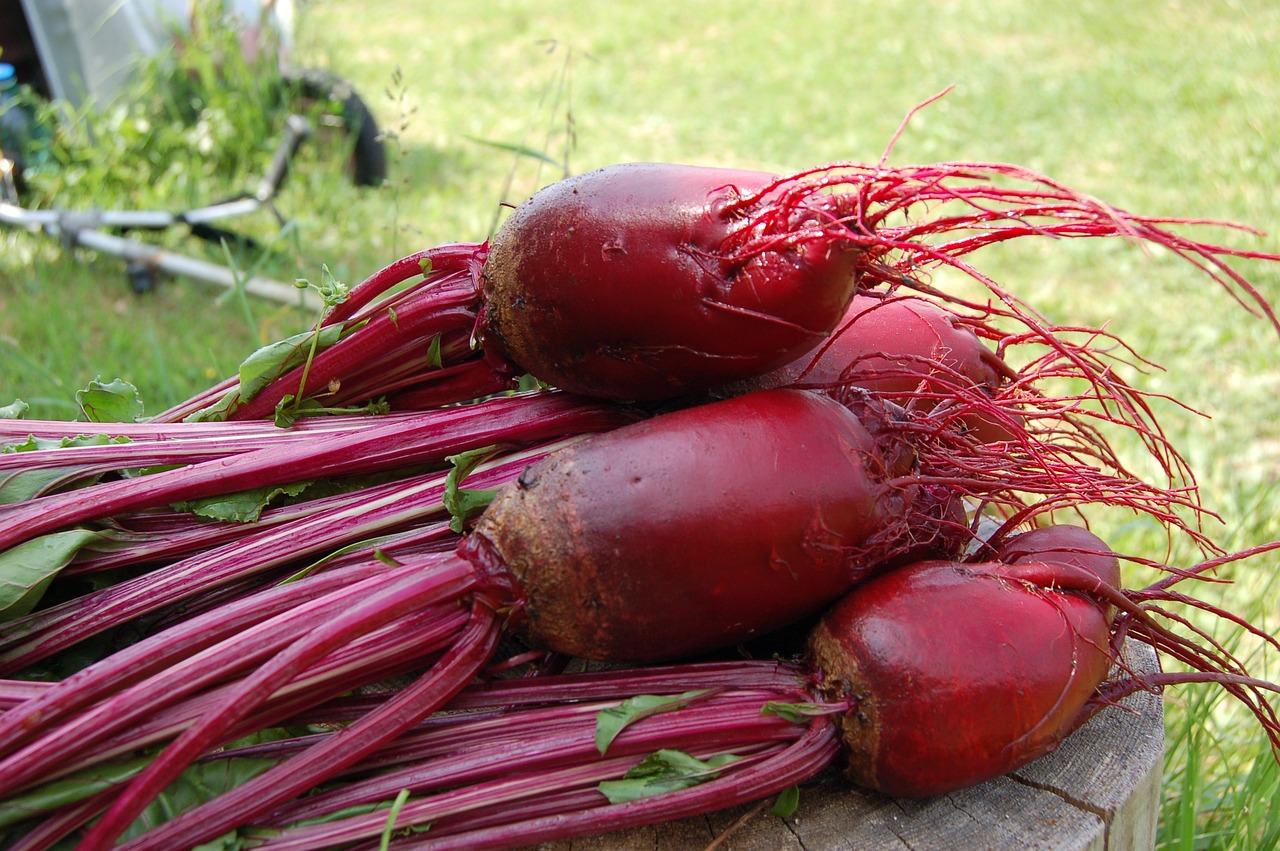
Nutrient Requirements for Beets
When it comes to growing beets, understanding their nutrient requirements is essential for achieving a bountiful harvest. Beets thrive in nutrient-rich soil, and the right balance of essential elements can make all the difference in their growth and flavor. The primary nutrients that beets require include nitrogen, phosphorus, and potassium, often referred to as N-P-K. These macronutrients play vital roles in various plant functions, from root development to overall vigor.
Nitrogen is crucial for leaf growth and contributes to the vibrant green color of the beet tops. However, too much nitrogen can lead to excessive foliage at the expense of root development, so it's important to find a balance. Phosphorus, on the other hand, supports strong root systems and is essential for the energy transfer within the plant. Lastly, potassium aids in water regulation and helps the plant withstand stress, making it vital for healthy beet growth.
In addition to these macronutrients, beets also benefit from several micronutrients, including magnesium, calcium, and iron. Magnesium plays a role in chlorophyll production, while calcium helps maintain cell structure and supports root growth. Iron is essential for the synthesis of chlorophyll and is crucial for the plant's overall health.
To ensure your beets receive the necessary nutrients, it's a good idea to conduct a soil test before planting. This test will help you determine the nutrient levels in your soil and identify any deficiencies. Based on the results, you can amend your soil accordingly. For instance, if your soil is low in nitrogen, you might consider incorporating well-rotted manure or a nitrogen-rich fertilizer. Similarly, if phosphorus levels are low, bone meal or rock phosphate can be excellent additions.
| Nutrient | Role in Beet Growth | Sources |
|---|---|---|
| Nitrogen | Promotes leaf growth and lush foliage | Compost, manure, blood meal |
| Phosphorus | Supports root development and energy transfer | Bone meal, rock phosphate |
| Potassium | Aids in water regulation and stress resistance | Wood ash, greensand |
| Magnesium | Essential for chlorophyll production | Epsom salt, dolomitic lime |
| Calcium | Maintains cell structure and supports root growth | Gypsum, lime |
| Iron | Crucial for chlorophyll synthesis | Iron sulfate, compost |
In summary, providing your beets with the right nutrients is key to growing healthy and flavorful roots. Regularly checking your soil and making necessary amendments will set you on the path to a successful beet harvest. Remember, healthy plants start with a healthy soil foundation!
- What is the best time to plant beets? Beets are typically planted in early spring or late summer, depending on your climate. They prefer cooler temperatures for optimal growth.
- How often should I fertilize my beets? It's best to fertilize beets at planting and again when they are about 4-6 weeks old. Follow the recommendations based on your soil test results.
- Can I grow beets in containers? Absolutely! Beets can be grown in containers as long as they have enough depth (at least 12 inches) to accommodate their roots.
- What pests should I watch out for when growing beets? Common pests include aphids and leaf miners. Regularly check your plants and consider using organic pest control methods if necessary.
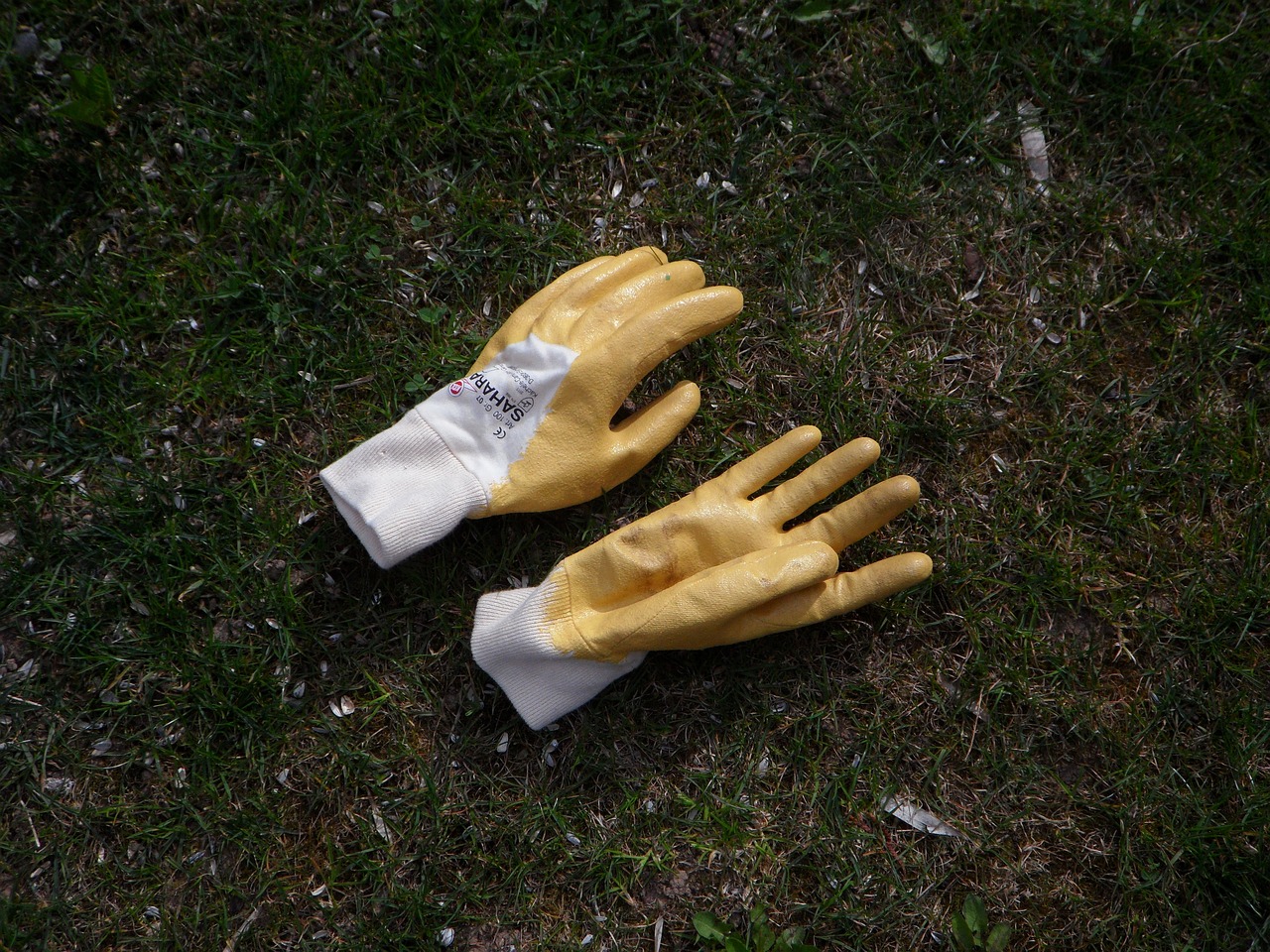
Planting Beets
When it comes to , timing and technique are your best friends. You want to make sure you're sowing those seeds at just the right moment to ensure a bountiful harvest. Generally, beets thrive in cooler temperatures, so aim to plant them in early spring or late summer. This is when the soil is warm enough to encourage germination but cool enough to keep the plants healthy. Think of it like Goldilocks; you want the conditions to be just right!
Now, let’s get into the nitty-gritty of how to actually plant those beets. First off, you'll want to prepare your soil by loosening it to about 12 inches deep. Beets are root vegetables, after all, and they need room to grow. You can use a garden fork or a tiller to break up any compacted soil. Once the soil is nice and fluffy, it’s time to think about the seed depth and spacing. A good rule of thumb is to plant your beet seeds about ½ to 1 inch deep and space them around 2 to 4 inches apart. This spacing allows for air circulation and gives each plant enough room to develop its roots. If you're feeling a bit adventurous, you can even plant them in rows, spacing the rows about 12 to 18 inches apart.
As for the actual seeds, beet seeds are unique because they come in clusters, which means you might end up with a few seedlings sprouting from each seed. This is where thinning comes into play. Once your seeds germinate and the seedlings are about 2 inches tall, you’ll want to thin them out to ensure that each plant has enough space to grow. You can do this by snipping the weaker seedlings at the soil line—try not to pull them out, as this can disturb the roots of the neighboring plants.
But wait, there’s more! After planting, it’s crucial to keep your beets well-watered, especially during their early growth stages. A consistent moisture level is key to preventing the beets from becoming tough or woody. Aim to provide about an inch of water per week, either through rainfall or irrigation. If you're using a sprinkler, try to water in the morning to minimize evaporation and fungal diseases.
Lastly, if you're contemplating whether to go for direct seeding or transplanting, it's essential to weigh the pros and cons of each method. Direct seeding is often easier and less labor-intensive, while transplanting can give you a head start on the growing season. However, beets don’t always respond well to being moved, so if you choose to transplant, make sure to do so when they are still young. This way, you can minimize any shock to the plants.
In summary, planting beets is a rewarding experience that can yield delicious results. By paying attention to the right timing, proper soil preparation, and watering techniques, you can cultivate a healthy beet crop right in your backyard. So grab those seeds, get your hands dirty, and let the magic of gardening unfold!
- What is the best time to plant beets? Early spring or late summer is ideal for planting beets, as they thrive in cooler temperatures.
- How deep should I plant beet seeds? Plant beet seeds about ½ to 1 inch deep in well-prepared soil.
- How far apart should I space beet plants? Space beet seeds 2 to 4 inches apart to allow for proper growth.
- Should I thin my beet seedlings? Yes, it’s important to thin seedlings to ensure each plant has enough space to grow.
- How much water do beets need? Aim to provide about an inch of water per week for optimal growth.

Direct Seeding vs. Transplanting
When it comes to growing beets, one of the first decisions you'll face is whether to use direct seeding or transplanting. Each method has its own set of advantages and disadvantages, and understanding these can make a significant difference in your beet harvest. Direct seeding involves planting beet seeds directly into the ground, while transplanting means starting the seeds indoors or in a controlled environment and moving the young plants outdoors once they’re established. So, which method is best for your garden?
Direct seeding is often favored for its simplicity and efficiency. You simply prepare your soil, plant the seeds, and let nature take its course. This method allows the beets to grow in their natural environment from the very beginning, which can lead to stronger plants that are more resilient to local pests and diseases. Moreover, direct seeding can save you time and effort, as you won’t need to worry about transplanting seedlings and the potential shock that can occur during the process.
On the flip side, transplanting can offer a few distinct benefits. For those living in regions with a shorter growing season, starting seeds indoors can give your beets a head start. This method allows you to control the growing conditions more closely, ensuring that your seedlings are strong and healthy before they face the outdoor environment. Additionally, transplanting can help in managing the spacing of your beets more effectively, as you can carefully place each plant where it has enough room to grow.
However, it’s essential to consider the potential downsides of each method. Direct seeding can sometimes lead to uneven germination, especially if the soil conditions are not ideal. If the soil is too dry or too wet, seeds may fail to sprout, resulting in gaps in your beet rows. On the other hand, transplanting requires more initial effort and careful attention to detail. You must ensure that the seedlings are not disturbed too much during the transfer, as this can lead to transplant shock, which may stunt their growth.
Ultimately, the choice between direct seeding and transplanting boils down to your specific gardening conditions and personal preferences. If you have a longer growing season and enjoy the simplicity of planting seeds directly in the ground, direct seeding might be your best bet. However, if you want to maximize your yield in a shorter season or prefer the control that comes with transplanting, starting seeds indoors could be the way to go. Regardless of the method you choose, the key is to ensure that your beets receive the care they need to thrive.
- Q: Can I mix direct seeding and transplanting for beets?
A: Yes! Some gardeners choose to direct seed some rows while transplanting others, allowing for a staggered harvest. - Q: What is the best time to direct seed beets?
A: Beets can typically be direct seeded in early spring, as soon as the soil can be worked, and again in late summer for a fall harvest. - Q: How deep should I plant beet seeds?
A: Beet seeds should be planted about 1 to 2 inches deep for optimal growth.
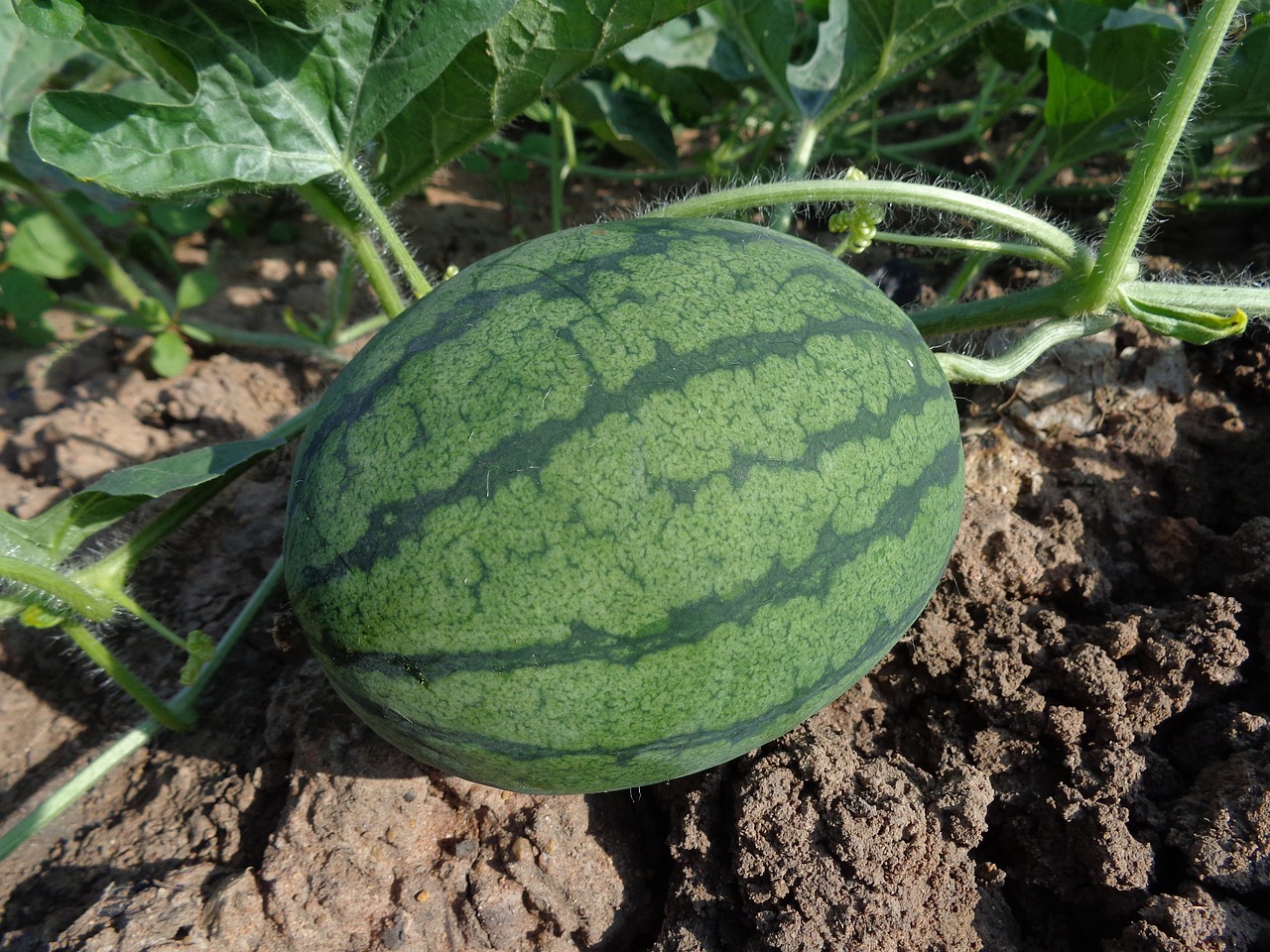
Watering and Irrigation Techniques
When it comes to growing beets, watering is not just a chore; it’s an art form. Think of your beets as thirsty little plants that need just the right amount of moisture to thrive. Overwatering can lead to root rot, while underwatering can stunt their growth. So, how do you strike that perfect balance? Let’s dive into some effective watering and irrigation techniques that will ensure your beets grow big, healthy, and delicious!
First off, understanding the water needs of beets is crucial. These plants generally prefer a consistent moisture level in the soil, especially during their early growth stages. Ideally, beets need about 1 to 2 inches of water per week. You can achieve this through rainfall or supplemental watering. However, the exact amount may vary based on factors like soil type, temperature, and humidity. For instance, sandy soils tend to drain quickly, requiring more frequent watering compared to clay soils, which retain moisture longer.
Next, let’s talk about irrigation techniques. There are a few popular methods you can use to keep your beets hydrated:
- Drip Irrigation: This method delivers water directly to the base of the plant, minimizing evaporation and runoff. It’s highly efficient and perfect for beets, as it keeps the soil consistently moist without wetting the foliage, which can lead to disease.
- Soaker Hoses: These hoses allow water to seep out slowly along their length, providing an even distribution of moisture. Lay them out in your beet rows, and you’ll have a gentle watering solution that keeps the soil moist without drowning your plants.
- Hand Watering: While it might seem old-fashioned, hand watering can be effective, especially for small gardens. Use a watering can or a hose with a spray nozzle to gently water around the base of each beet plant.
Timing is also key when it comes to watering. Early mornings are the best time to water your beets, as this allows the plants to absorb moisture before the heat of the day kicks in. Watering in the evening can leave the foliage wet overnight, increasing the risk of fungal diseases. If you’re using a drip system or soaker hoses, check the soil moisture regularly to adjust your watering schedule accordingly.
Now, let’s not forget about the importance of mulching. Applying a layer of organic mulch, such as straw or shredded leaves, around your beets can help retain soil moisture, suppress weeds, and regulate soil temperature. It’s like giving your plants a cozy blanket that keeps them comfortable while they grow!
In summary, the key to successful beet growth lies in understanding their water requirements and employing effective irrigation techniques. By monitoring soil moisture, choosing the right watering method, and timing your watering sessions wisely, you’ll set your beets up for success. So grab that watering can or turn on the drip system, and watch your beet garden flourish!
Q: How often should I water my beets?
A: Beets generally need about 1 to 2 inches of water per week. Adjust based on rainfall and soil type.
Q: Can I overwater my beets?
A: Yes, overwatering can lead to root rot. Ensure the soil drains well and monitor moisture levels.
Q: What is the best time to water beets?
A: Early morning is the ideal time to water beets, allowing them to absorb moisture before the heat of the day.
Q: Is mulching necessary for beets?
A: While not strictly necessary, mulching helps retain moisture, suppress weeds, and regulate temperature, benefiting your beet plants.
Frequently Asked Questions
- What are the best beet varieties to grow in my backyard?
When it comes to choosing beet varieties, it really depends on your taste and climate. Popular options include Detroit Dark Red, known for its sweet flavor, and Golden Beets, which are milder and have a beautiful color. If you're in a cooler climate, consider Chioggia beets, which have a unique striped pattern and thrive in lower temperatures.
- How do I prepare the soil for growing beets?
Preparing the soil is a crucial step for a successful beet harvest. Start by testing your soil's pH; beets prefer a pH between 6.0 and 7.0. If your soil is too acidic, you can add lime to raise the pH. Additionally, mixing in organic matter like compost will enhance soil fertility and improve its structure, making it easier for the beets to grow.
- Should I direct seed or transplant my beets?
This is a common dilemma for many gardeners! Direct seeding is often easier and allows beets to establish themselves in their final growing location. However, if you're in a short growing season, transplanting can give you a head start. Just be sure to handle the seedlings gently to avoid disturbing their roots.
- How often should I water my beets?
Watering is key to growing healthy beets! Aim to keep the soil consistently moist, especially during dry spells. A good rule of thumb is to water deeply about once a week, but you may need to adjust based on your local climate and soil type. Remember, beets prefer even moisture to develop properly!
- What nutrients do beets need for optimal growth?
Beets thrive on a balanced diet of nutrients. Key players include nitrogen for leafy growth, phosphorus for root development, and potassium for overall health. You can provide these nutrients through a good quality fertilizer or by amending your soil with compost. Just make sure to follow the recommended application rates!
- When is the best time to plant beets?
The best time to plant beets is in the early spring or late summer. They prefer cooler temperatures, so aim for a planting window where daytime highs are between 60°F and 70°F. If you’re in a warmer climate, consider planting in the fall to avoid the heat of summer.


















